Phacelia campanularia, Desert Bluebells
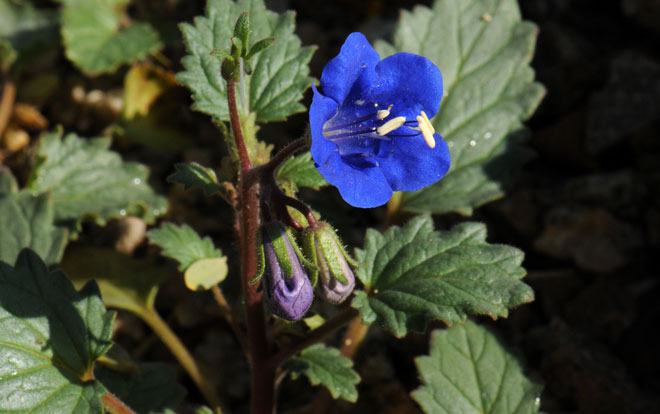
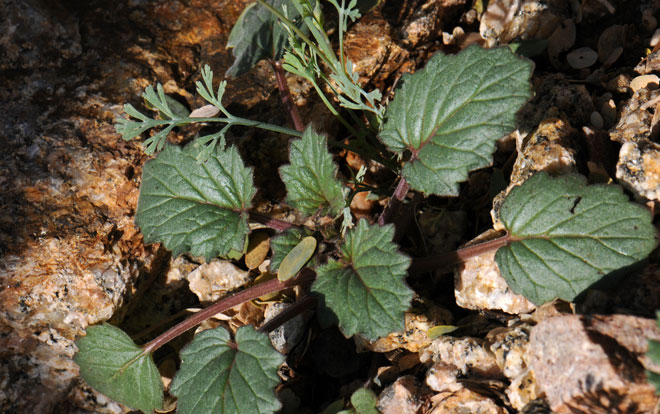
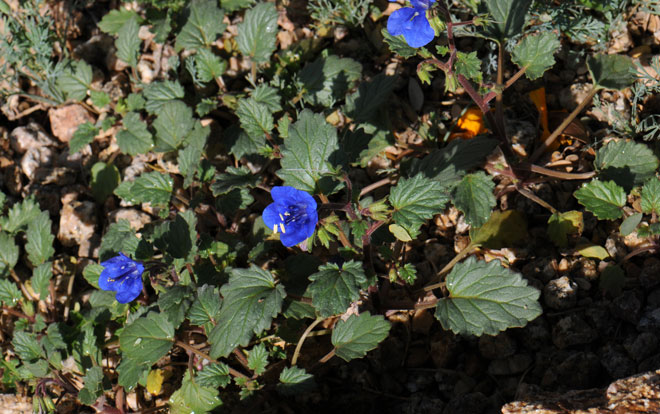
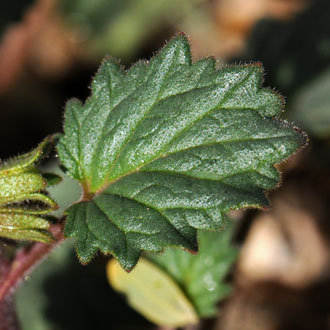
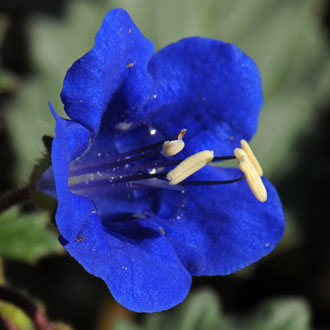
Scientific Name: Phacelia campanularia
Common Name: Desert Bluebells
Also Called: California Bluebell, Desert Bells, Desert Canterbury Bells, Desert Scorpionweed
Family: Hydrophyllaceae (Boraginaceae, Hydrophylloideae), the Waterleaf Family
Synonyms: ()
Status: Native
Duration: Annual
Size: About 12 inches or so.
Growth Form: Forb/herb; stems green or reddish, erect and/or spreading, glandular with fine hairs.
Leaves: Green; dark green; petioles, leaf shape semi-rounded to ovate, margins toothed.
Flower Color: Blue, bright blue; corolla fused, flowers showy up to 1 inch, funnel- to bell-shaped, clustered in scorpioid cyme, fruit a capsule containing several seeds surrounded by dried calyx.
Flowering Season: February to April, longer blooming period in cultivation.
Elevation: Below 4,500 feet.
Habitat Preferences: Mojave and Sonoran Deserts in open, sandy or gravelly areas in California.
Recorded Range: In the United States Desert Bluebells are native to southeast California.
(Records from Maricopa County, AZ are likely escapees from popular cultivation in the Phoenix area. (Records from the state of NY include a 1986 "checklist" and a 1990 "vouchered atlas" and, if true, would likely also be introduced.)
North America & US County Distribution Map for Phacelia campanularia.
U.S. Weed Information: No information available.
Invasive/Noxious Weed Information: No information available.
Wetland Indicator: No information available.
Threatened/Endangered Information: No information available.
In the Southwestern United States: Arizona has 49 species of genus Phacelia, California has 96 species, Nevada has 54 species, New Mexico has 23 species, Texas has 13 species, Utah has 42 species. All data is approximate and subject to taxonomic changes.
Comments: Hairs from stems and leaves of certain species of Phacelia, thought to cause a rash include Desert Bluebells.
Special Value to Native Bees; Species of the genus Phacelia are known to, or thought to attract large numbers of native bees including Yellow Faced Bees, Miner Bees and Mason Bees. This information was provided by the Pollinator Program at The Xerces Society for Invertebrate Conservation.
In Southwest Desert Flora also see; Cleftleaf Wildheliotrope, Phacelia crenulata, Distant Phacelia, Phacelia distans, Fremont's Phacelia, Phacelia fremontii, Varileaf-Phacelia, Phacelia heterophylla, Kaweah River Scorpion-weed, Phacelia magellanica and Lacy Phacelia, Phacelia tanacetifolia.

